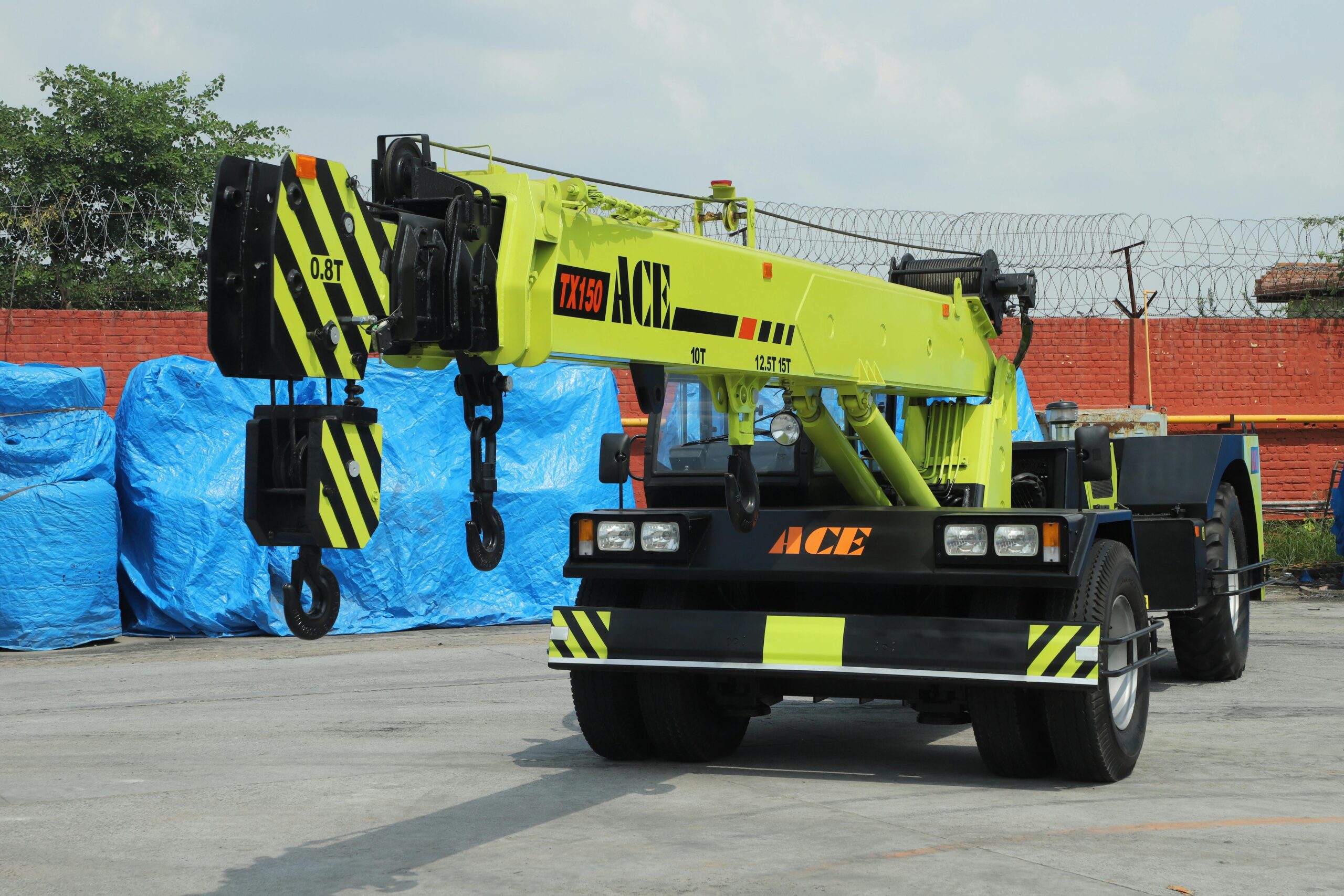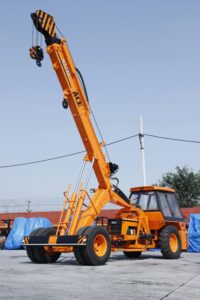How Digitalization is Changing the Crane Rental Market

The Impact of Digitalization on the Crane Rental Market
Digitalization is transforming industries worldwide, and the crane rental market is no exception. From AI-driven fleet management to IoT-enabled monitoring, the integration of digital technologies is improving efficiency, reducing costs, and enhancing safety in crane rental operations. In this blog, we’ll explore the key ways digitalization is reshaping the crane rental industry and how businesses can leverage these advancements for better operational success.
1. Online Crane Rental Marketplaces
Traditional crane rental methods involved time-consuming negotiations and manual contracts. Now, digital platforms allow customers to browse, compare, and book cranes for rent online, offering:
- Real-time availability of cranes from multiple providers.
- Price transparency for better decision-making.
- Customer reviews and ratings for credibility.
- Secure online payments for a hassle-free experience.
Platforms like CraneKart are revolutionizing the crane rental industry by providing a seamless experience for both renters and owners.
Benefits of Online Marketplaces
- Faster Transactions: Digital platforms reduce the time spent on negotiations, enabling faster crane rentals.
- Broader Reach: Rental companies can connect with clients beyond their immediate location, expanding business opportunities.
- Cost Savings: Reduced paperwork and automated processes minimize administrative costs.
- Data-Driven Insights: Platforms analyze customer behavior to improve service offerings.
- Better Equipment Utilization: Companies can efficiently manage fleet usage based on demand trends.
2. IoT and Telematics for Fleet Management
Internet of Things (IoT) and telematics are playing a crucial role in monitoring crane rental fleet performance and utilization. By equipping cranes with IoT sensors, rental companies can:
- Track real-time location and usage through GPS and cloud-based dashboards.
- Monitor fuel consumption and maintenance needs to reduce downtime.
- Predict mechanical failures with AI-driven analytics.
- Enhance safety by detecting operational risks like overloads or unstable ground conditions.
Key Advantages
- Reduced Maintenance Costs: Predictive analytics help schedule timely maintenance.
- Improved Efficiency: Data insights enable better fleet utilization.
- Enhanced Safety: Real-time alerts prevent operational hazards.
- Lower Downtime: Faster issue resolution ensures uninterrupted operations.
- Increased Asset Lifespan: Well-maintained cranes perform better and last longer.
3. AI-Powered Predictive Maintenance
Predictive maintenance uses artificial intelligence (AI) and machine learning to analyze data from crane rental market operations. This helps rental companies:
- Detect wear and tear early, preventing unexpected breakdowns.
- Optimize maintenance schedules to extend crane rental lifespan.
- Reduce downtime and repair costs, improving overall efficiency.
- Enhance compliance with safety regulations, reducing legal risks.
By shifting from reactive to predictive maintenance, crane rental businesses can minimize disruptions and maximize profitability.

How AI Transforms Maintenance
- Real-Time Diagnostics: AI continuously monitors crane performance.
- Automated Maintenance Alerts: Instant notifications for servicing needs.
- Lower Operational Costs: Preventive care reduces expensive repairs.
- Extended Equipment Lifespan: Well-maintained cranes last longer.
4. Augmented Reality (AR) for Crane Operator Training
Training crane rental operators has traditionally been time-consuming and costly. Now, Augmented Reality (AR) and Virtual Reality (VR) offer:
- Simulated crane operations for risk-free training.
- Real-time guidance through AR-enabled smart glasses.
- Improved safety awareness by simulating real-world challenges.
- Better Learning Retention: Interactive training methods lead to improved skill development.
Advantages of AR Training
- Faster Learning Curve: Operators gain experience without real-world risks.
- Reduced Training Costs: Eliminates the need for physical training setups.
- Enhanced Safety Measures: Identifies potential operational hazards.
- Standardized Training: Ensures consistency in operator skills.
- Real-Time Performance Analysis: Trainers can assess operator proficiency instantly.
5. Blockchain for Secure Transactions and Contracts
Blockchain technology is being adopted for:
- Smart contracts that automatically execute crane rental agreements.
- Tamper-proof maintenance records for crane rental market verification.
- Faster and more secure payments without intermediaries.
- Decentralized Equipment History: Ensuring transparency for used crane transactions.
This eliminates fraud, reduces paperwork, and enhances transparency in crane rental.
Why Blockchain is a Game-Changer
- Trust and Security: Ensures transparent and verifiable transactions.
- Automated Smart Contracts: Reduces reliance on third-party intermediaries.
- Immutable Data Storage: Prevents fraudulent modifications.
- Cost-Efficient Transactions: Eliminates unnecessary fees.
- Fraud Prevention: Ensures authenticity of rental agreements.
6. Remote Monitoring and Automation
With the rise of autonomous and remotely controlled cranes, digitalization in crane rental enables:
- Remote operation in hazardous environments like mines or offshore sites.
- Automated lifting systems to improve precision and reduce labor dependency.
- Cloud-based dashboards for centralized crane rental fleet monitoring.
- Reduced Human Error: Automation ensures precision in operations.
Key Benefits
- Increased Safety: Remote operation reduces operator exposure to danger.
- Higher Efficiency: Automation optimizes lifting processes.
- Cost Reduction: Lowers labor costs through autonomous systems.
- Scalability: Remote access allows expansion to multiple locations.
- Sustainable Operations: Optimized energy consumption for eco-friendly practices.
7. Data-Driven Decision Making
Crane rental businesses are leveraging big data analytics to:
- Predict demand trends and adjust crane rental pricing accordingly.
- Identify underutilized equipment to optimize crane rental fleet management.
- Improve customer service by analyzing crane rental patterns and feedback.
- Boost Productivity: Data insights allow better workflow optimization.
How Data Improves Business
- Better Inventory Management: Avoids overstocking or underutilization.
- Optimized Pricing Models: Adapts rates based on demand.
- Customer Insights: Enhances personalized services.
- Market Trends Analysis: Helps businesses stay competitive.
- Efficient Asset Allocation: Ensures maximum crane utilization.
Conclusion
Digitalization in the crane rental market is revolutionizing the industry by enhancing efficiency, safety, and profitability. From online booking platforms to AI-driven predictive maintenance, businesses that embrace these technological advancements will stay ahead in a competitive crane rental industry.
Are you leveraging digital tools for your crane rental business? Start integrating these innovations today and stay ahead of the competition!
